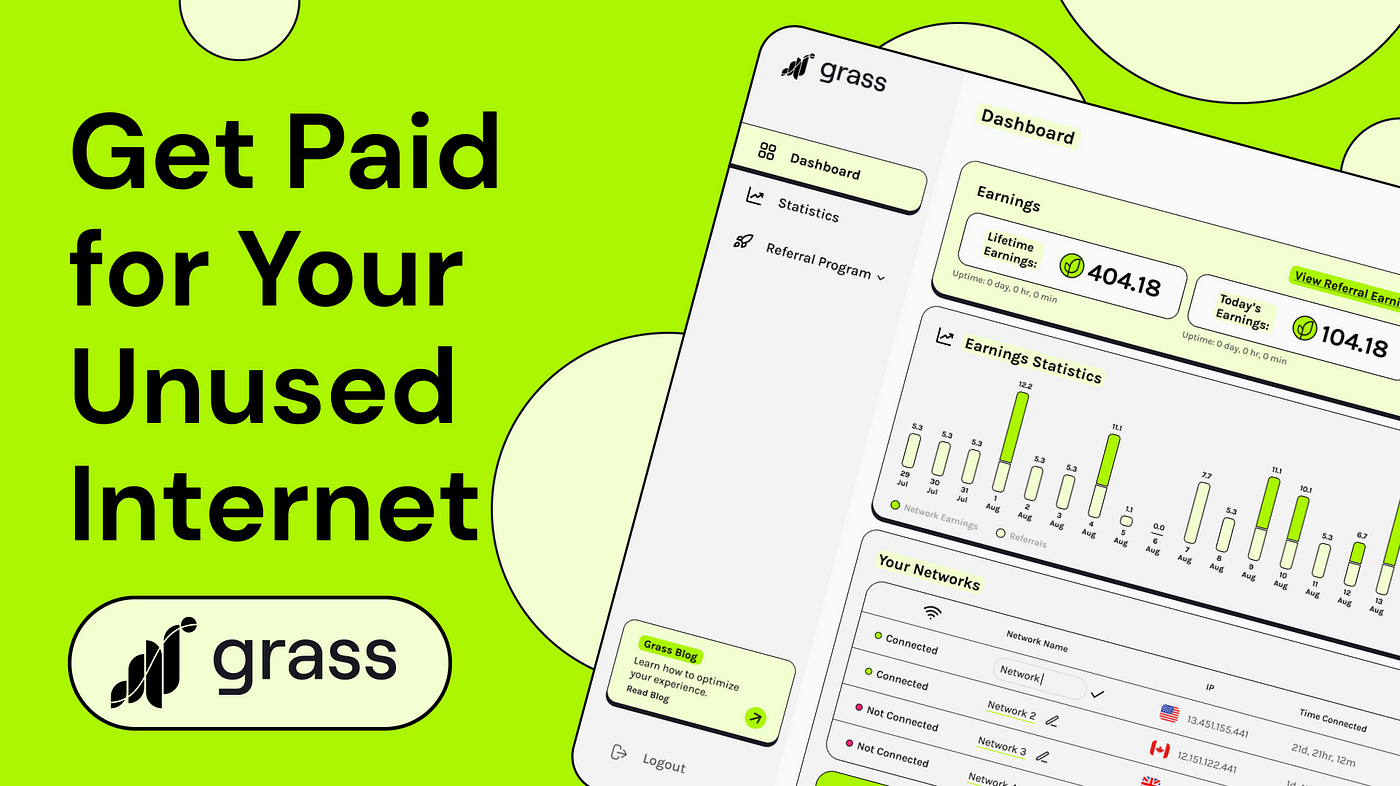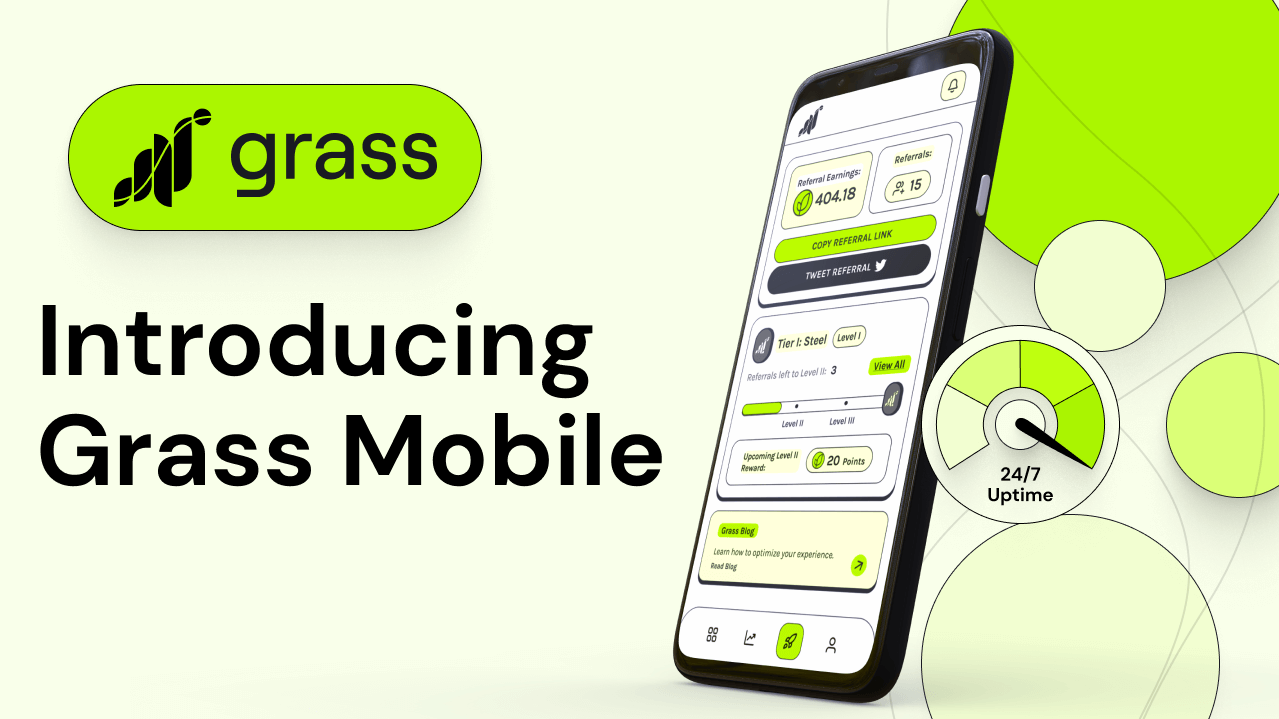Grass: Decoding the Enigma of the Green Crypto
The world of cryptocurrency is a whirlwind of innovation and, sometimes, head-scratching concepts. Among the plethora of tokens vying for investor attention, Grass stands out as a project with a unique approach. But what exactly is grass crypto, and what potential does it hold? This comprehensive article delves into the intricate world of grass, exploring its purpose, technology, tokenomics, and future prospects.
Unveiling the Grass Network: Beyond the Literal Green
Grass goes beyond the simple meaning of the word. It’s a decentralized network built on the Solana blockchain that focuses on data collection and processing for AI development. Here’s how it works:
- Idle Bandwidth Utilization: Grass leverages the unused internet bandwidth of its users. By installing a Chrome extension, users essentially become “node operators,” contributing their bandwidth to the network.
- Web Scraping for AI Datasets: Grass isn’t about private information or compromising user security. It concentrates on publicly available web data. This data is “scraped” by the network, meaning it’s extracted and compiled from various websites.
- Transforming Raw Data: The raw data collected isn’t directly usable for AI training. Grass employs its in-house AI tool, Socrates, to clean and convert this unstructured data into a structured format. Think of it as transforming raw ingredients into a well-organized recipe for AI models.
- The Grass Marketplace: A Hub for AI Builders The processed data is then offered on a marketplace accessible to AI developers. These developers can purchase the data to train their specific AI models, fueling innovation in various fields.
Essentially, Grass acts as a bridge between readily available public web data and the ever-evolving world of AI. By incentivizing users to contribute bandwidth and offering valuable data sets, Grass aims to create a win-win situation for all stakeholders.
Grass Points: Gamifying the Network and the Potential Airdrop
Grass employs a unique points system to incentivize user participation. Users who run the Chrome extension and contribute bandwidth earn points. Additionally, a referral program allows users to earn points based on the activity of their referred friends, creating a network effect.
Here’s the intriguing part: rumors swirl about a potential future airdrop of a governance token associated with Grass. Earning points now could potentially translate into receiving these tokens when (or if) they are launched. This speculation has fueled interest in the project, attracting users who see it as an opportunity for passive income.
However, it’s crucial to remember that this airdrop is just that—a rumor. There’s no official confirmation from the Grass team, and investment decisions based solely on airdrop speculation are inherently risky.
TouchGrass: A Playful Juxtaposition or a Deeper Message?
The name “Grass” might seem like a lighthearted choice in the often-serious world of crypto. But some believe there’s a deeper meaning. “TouchGrass” is a popular internet meme used to encourage people to step away from screens and reconnect with nature. Could Grass be a playful way to highlight the importance of “real-world” data in the digital realm of AI?
This interpretation adds another layer to the project, suggesting a subtle nod towards the balance between technology and human well-being.
Delving into the Technical Landscape: The Grass Protocol
Grass operates on a decentralized Layer 2 network built on top of Solana. This choice offers several advantages, including:
- Scalability: Solana is known for its ability to handle high transaction volumes, which is crucial for a network that deals with large amounts of data.
- Security: Solana leverages a Proof-of-Stake consensus mechanism, ensuring a secure and reliable environment for the Grass network.
- Smart Contract Capabilities: Solana’s smart contract functionality allows for the creation of automated programs that govern the Grass ecosystem, ensuring smooth operation and fair distribution of rewards.
The technical foundation of Grass seems well-suited for its purpose, providing a robust platform for data collection, processing, and marketplace operations.
Tokenomics of Grass: A Glimpse into the Future (if any)
As mentioned earlier, there’s no officially announced token associated with Grass. However, discussions about a potential governance token and the points system have sparked investor interest. Here are some possibilities to consider:
- Governance Token: A governance token could empower users to participate in decision-making processes related to the Grass network’s development. This could involve voting on protocol upgrades, fee structures, and data marketplace regulations.
- Point Utility: Even without a formal token, Grass points could hold value within the ecosystem. They could potentially be used to access premium data sets, prioritize bandwidth contribution, or gain voting rights within the network (if a governance structure is implemented).
The Grassy Outlook: Potential, Risks, and the Road Ahead
Grass presents a novel concept in the crypto sphere. By leveraging unused bandwidth and focusing on publicly available web data, it offers a sustainable and ethical approach to data collection for AI development. Here’s a balanced look at the project’s potential and the challenges it faces:
Potential Benefits:
- Democratization of AI Data: Grass empowers individuals to contribute to the advancement of AI by offering their unused bandwidth. This could lead to a more diverse and accessible pool of data for AI development.
- Focus on Public Data: By concentrating on publicly available data, Grass avoids ethical concerns surrounding data privacy and the scraping of personal information.
- Win-Win Proposition: Users earn points for contributing bandwidth, while AI developers gain access to valuable data sets. This creates a mutually beneficial ecosystem.
- Potential for Passive Income: The rumored airdrop and potential future utility of points could incentivize user participation and generate passive income streams.
Challenges and Risks:
- Speculative Investment: The lack of a confirmed token and reliance on airdrop rumors could lead to speculative investments rather than investments based on the project’s long-term value proposition.
- Competition: The data collection and marketplace space for AI is becoming increasingly crowded. Grass will need to establish a strong competitive advantage to succeed.
- Technical Hurdles: Scaling the network and ensuring efficient data processing and delivery will require ongoing technical development and innovation.
- Regulatory Landscape: As data privacy regulations evolve, Grass will need to adapt its practices to ensure compliance with legal frameworks.
Looking Forward: Grass Needs to Cultivate Trust and Transparency
For Grass to flourish, it needs to cultivate trust and transparency with its user base. Here are some key steps to watch for:
- Official Token Announcement: If a governance token or utility token is planned, a clear announcement outlining its purpose, distribution, and utility within the ecosystem is crucial.
- Roadmap and Development Updates: A well-defined roadmap showcasing the project’s development goals and timelines will build user confidence. Regular updates on progress will be essential.
- Engaging the Community: Open communication with the Grass community through forums, AMAs (Ask Me Anything sessions), and social media will foster a sense of involvement and encourage valuable user feedback.
Conclusion: Grass: A Seed of Innovation, But Careful Tending is Required
Grass is a project with a unique and potentially impactful proposition. Its focus on ethical data collection and user incentivization positions it well within the evolving AI landscape. However, the project is still in its early stages, and its success hinges on overcoming challenges and building trust with its user base. As with any new venture, careful research and a cautious approach are essential before diving in.






